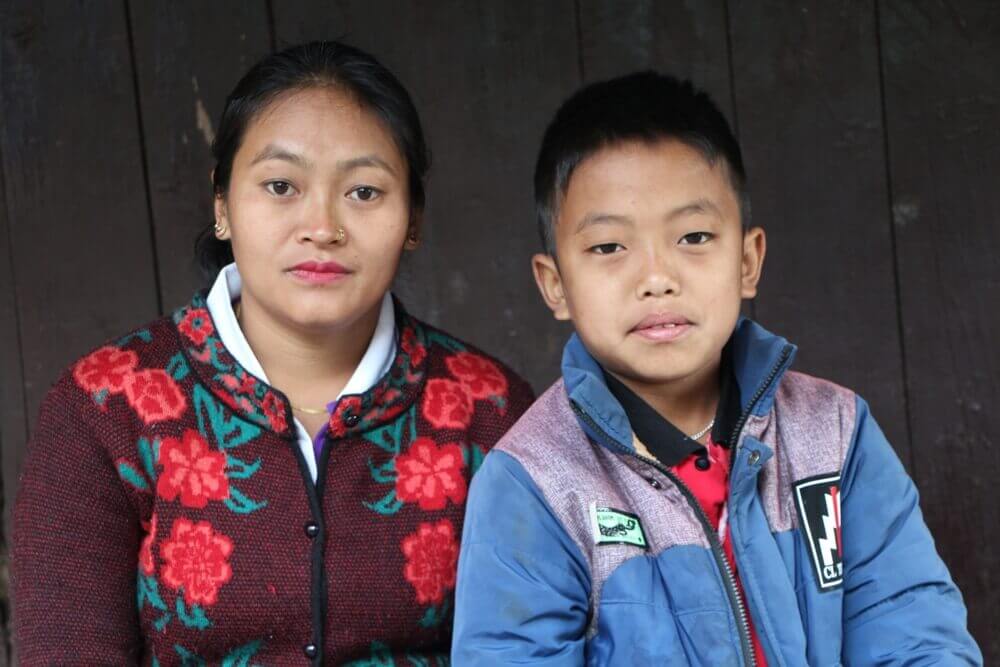Forgotten people of the People’s War

Anupa Rai was in Grade 8 in Okhaldhunga when she was so stirred by the revolutionary zeal of the Maoists that she and her brother joined the militia.
At age 16, she went through weapons training and was hopeful that the war would improve the lives of neglected communities like hers. Fresh out of school, with the energy and drive of a newly converted rebel, Rai was fully focused on the movement.
The teenager was soon deployed at the frontlines of Maoist attacks on security bases in eastern Nepal. She fought in the battles of Salleri, Bhakundebesi, Chainpur, Sindhuli and Rumjatar.
During the fighting in Chainpur, Rai was charging at the Nepal Army sentry point when she stepped on mines laid at the perimeter of the base. She was severely injured, unconscious and was left for dead.
When she came to, she was alone in the middle of a jungle. She dragged herself to the nearest village where locals were fortunately helpful, and treated her. She learnt later that her brother was also wounded and taken to India for treatment.
After three weeks, Rai was well enough to contact the Maoist base in Sankhuwasabha where her comrades had already declared her a martyr. It took her two more months to recover enough to rejoin her platoon.

Although she had received basic medical treatment, the shrapnel from the explosions were still lodged on the left side of her head and chest, which left her in a lot of pain.
In 2002 Anupa married fellow-guerrilla Man Kumar Rai and the couple had fought alongside each other in several battles. After the 2006 ceasefire, Man Kumar and Anupa took their newly born son and went to their ancestral village two days walk northeast of Phidim, where they have been living since.
She applied for integration into the Nepal Army, but was disqualified because of her injury. With no compensation and the meager earnings from the farm not enough to raise a family, Man Kumar migrated to Malaysia to work.

In all these years, Anupa hasn’t even appeared in the list of war wounded, which means she has not been entitled to compensation or free medical treatment.
Anupa and Man Kumar’s Maoist commanders were Sanjiv Thapa and Santu Darai, and the two are working as personal aides to Maoist Chief Pushpa Kamal Dahal in Kathmandu.
“We fought for change and progress, without thinking about ourselves. It is unfair that our former commanders who now enjoy senior positions have completely ignored us,” says Anupa, who is now 31. “The Party should take care of people like us and at least pay for medical treatment.”
The war ended 12 years ago, but she is reminded of it every moment of every day by the severe pain in her head and chest, and the numbness that follows at times. She does the household chores and works on the farm, but her movements are restricted by the pain – which gets worse with heat and cold.


Anupa has made the rounds of all hospitals in Kathmandu, Dharan and Biratnagar to get the metal pieces extracted from her body, but she could not afford the treatment.
For the past five years, Anupa had used the money her husband sends home to pay for household expenses and school fees for her son, Rabin who is now 12, which is as long as peace returned to Nepal.
But there isn’t much left over to pay for the operations that she needs, she also takes care of her mother-in-law Budhha Maya who is 72 and herself in frail health.
Anupa Rai’s story has appeared in the national media, and it has caught the attention of doctors at the B&C Hospital in Birtamod which has offered her free treatment.
Anupa feels she can finally lead a normal life again, free from pain, but having been let down so often, she is not going to believe in free medical treatment until it actually happens.
In an interview eight years ago, Anupa Rai said: “The war just made a lot of people miserable. Let’s hope that we never have to fight again.”

Theatre of war to operation theatre

Durga Prasai of B&C Hospital in Birtamod (in yellow shirt) was reading Annapurna Post one morning last week when he came across the moving story of ex-Maoist guerrilla Anupa Rai (at far right) who had been injured during the conflict, and had been left to fend for herself while raising a family.
Without hesitation, Prasai got in touch with Rai in Phidim and asked her to take the 9 hour bus ride to his hospital, and offered her free treatment.
Anupa has pieces of metal lodged in her head and chest, and has been living with the pain, numbness and tingling feeling for 15 years.
On Tuesday, Rai was examined by B&C’s neurosurgeon Pankaj Nepal who concluded that the operation would be complex, and could last up to 10 hours. He has decided to only extract the shrapnel from Rai’s head, and leave the one in the chest. He is confident that her health will be fully restored after the procedure.
“After the peace process I approached my party which was in government many times, but they never listened to me,” Rai told Rabin Bhattarai of Annapurna Post in Birtamod on Tuesday, “I am glad I am finally in good hands.”

Update
Doctors at B&C Hospital in Birtamod on 9 April extracted two 5.5mm pieces of shrapnel from Anupa Rai's head after a five-hour long surgery. A few more mental pieces remain in her body, but they are said not to pose any danger. Anupa is recovering well, and will soon go home to Panchthar.




